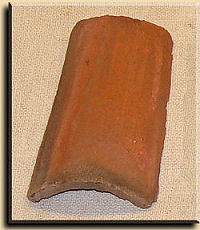 Need a Tile Roofing Contractor? We can help:
Need a Tile Roofing Contractor? We can help:Considering a tile roof? Consider how much it could save you and the planet.
New research shows that the energy-efficient properties of concrete and clay tile roofs play a key role in helping reduce energy costs. Working with the Oak Ridge National Laboratory (ORNL), the Tile Roofing Institute (TRI) sheds light on the unique, energy-saving properties of tile roofing systems, what makes it a cool roofing product and how builders and homeowners can benefit.
Energy Efficiency -- It's More Than Just Color
Historically, experts have promoted tile roofing's cool, energy-saving properties. Light- or white-colored roof tiles were shown to cool the house beneath it by reducing the amount of heat transferred from outside to inside. The problem was that builders weren't able to sell home buyers on light-colored tile roofs as most people preferred their roofs to be darker in color.
What's now known is that properties other than color make tile an even better cool roofing option, potentially saving home buyers additional energy and money. Research from ORNL shows that tile roofing's mass, reflectivity and ventilation beneath the tiles contribute to a reduction of heat transference of at least 50 percent, when compared to a traditional asphalt shingle roof. Coated clay tiles can cut the transfer of heat by up to 70 percent.
As more evidence is found, green building and government energy programs are feeling pressure to consider tile roofing in a home's environmental rating. In his ORNL research, William Miller, Ph.D. notes, "The Environmental Protection Agency, the Leadership in Energy and Environmental Design (LEED) program and many state energy offices should offer energy credits for roofs using sub-tile venting and cool pigmented colors."
Tile Durability Also Saves Money
In addition to its energy-efficient properties, tile roofing is highly durable. Installed properly, tile roofs can withstand harsh weather conditions including high winds, snow and ice build-up, hail and earthquakes. Additionally, tile roofing is naturally fire-resistant.
With tile's strength and ability to stand up to the elements, it requires relatively few repairs compared to asphalt shingle roofing. According to TRI Technical Director Rick Olson, because tile is inherently durable, tile roofs can last much longer than shingle roofs. "Tile roofs can last decades," notes Olson. "In Europe, where tile roofs are common in a variety of climates, it's not unusual to find buildings with tile roofs that have lasted centuries."
About the Tile Roofing Institute
The Tile Roofing Institute (TRI) is a non-profit trade and membership association open to those involved in the production, distribution and installation of clay and concrete tile roof systems. TRI has provided technical expertise to roofing professionals and other building industry constituents since 1971. To ensure best installation practices, TRI also offers contractor training through its Certified Installer Program. TRI manufacturer members produce 95 percent of the tile roofing installed in North America. More information about TRI can be obtained by visiting www.tileroofing.org or by calling (312) 670-4177
ConstructionDeal.com can help you find a tile roof installer. It's a fast and easy way to find roofing contractors. Submit your request and get calls from roof companies. At no cost or obligation to you.
1 comment:
Very good and useful things that you have written in your blog.
Post a Comment